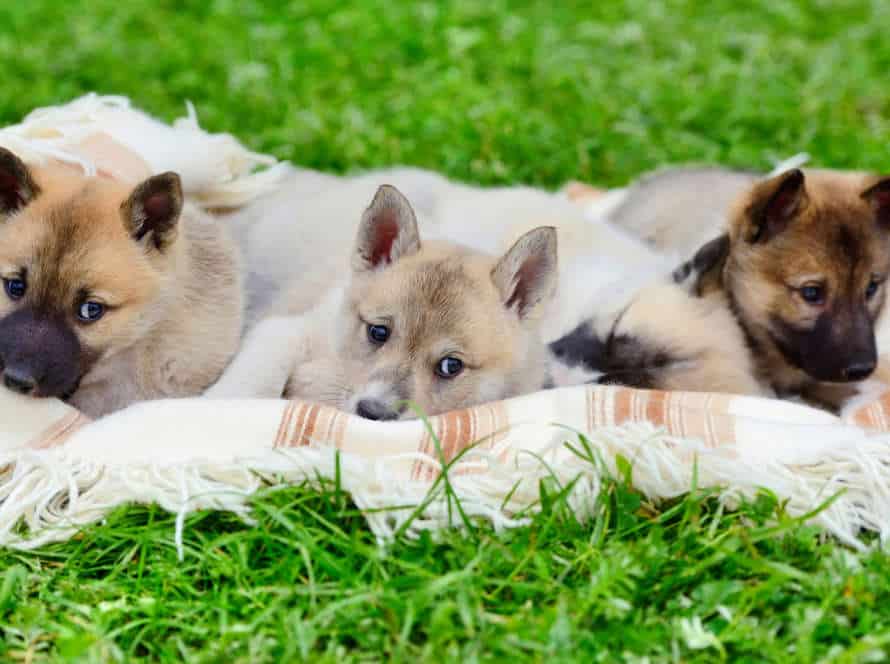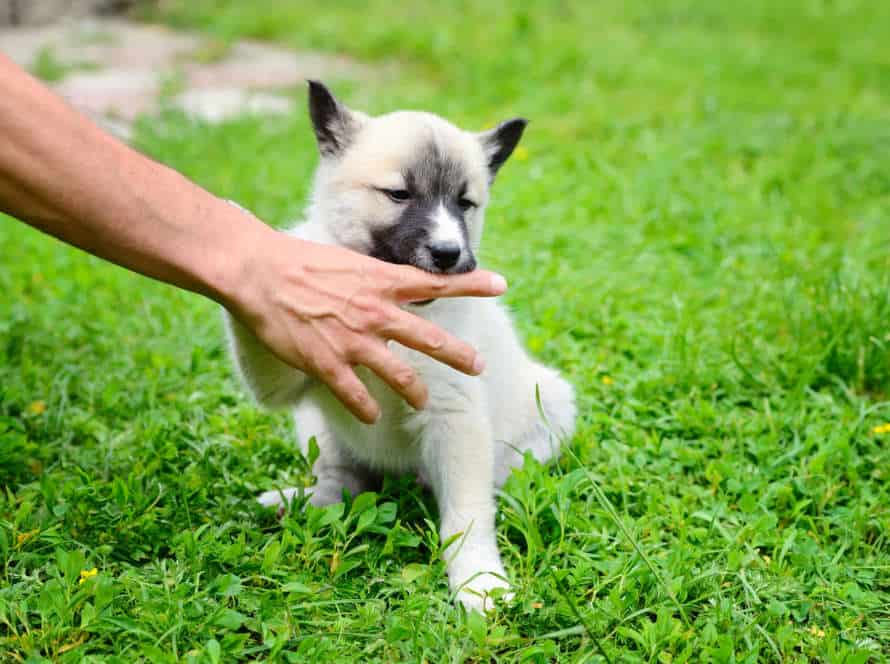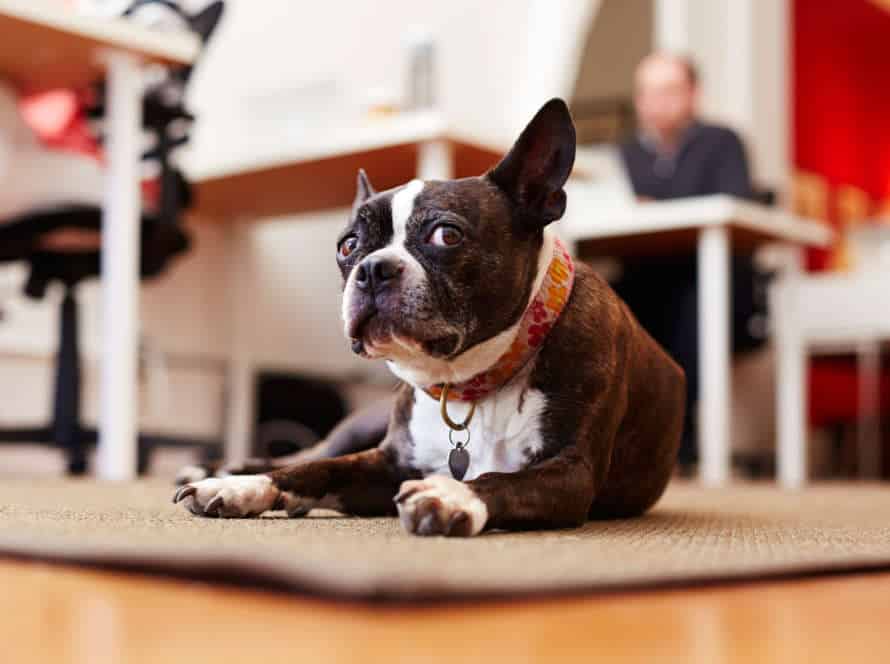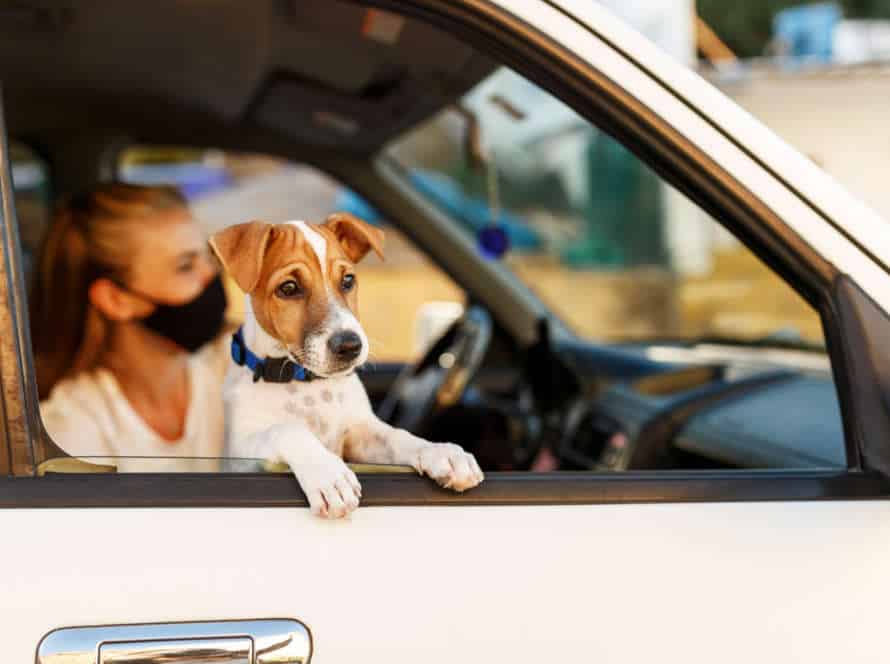Setting Boundaries: Managing Dog Interactions in Public Spaces
Setting boundaries for your pup when in public can help you control their interactions, stop bad behavior and keep them safe. Here are some tips:
- Keep them on a leash at all times and make sure they have been trained and socialized.
- Respect other people’s space by not letting your dog near them unless they say yes.
- Don’t go to places where dogs aren’t allowed or cause trouble, like playgrounds or outdoor restaurants.
- Teach them basic commands like “sit“, “stay” and “come” to help you manage their behavior in public.
- Be conscious of their body language and behavior. Intervene if they show signs of aggression, fear or anxiety.
By setting boundaries and managing your dog in public, you can make sure everyone has a safe and positive experience.
Understanding Your Dog’s Behavior
When you’re around other doggos, be aware. Know your pup’s reaction to different things. This will help you feel sure when dealing with other pooches. With knowledge of dog behavior, you can set up guidelines for your pet. This will guarantee successful interactions.
Recognizing different types of dog behavior in public spaces
Recognizing dog behavior in public spaces is important. To understand & manage dog interactions effectively, you need to be aware of common types of dog behavior.
- Fearful behavior: Cowering, hiding, trembling, or avoiding eye contact could be signs of fear. This can happen when dogs encounter new environments, unfamiliar people or animals, or loud noises.
- Aggressive behavior: This can range from growling & snarling to biting & attacking. Dogs might show aggression towards other dogs, people, or objects they think are a threat.
- Playful behavior: Jumping, barking excitedly, wagging their tail, or nudging you or other dogs to initiate play are all signs of playful behavior.
Know these behaviors & establish boundaries. Use positive reinforcement techniques to correct negative behavior & promote good behavior. This will help keep your dog safe & happy.
Identifying triggers that may cause unwanted behavior
Identifying what causes your dog to react badly is a must for understanding their behaviour. We call this a ‘trigger’. It’s something that sets off an unwanted reaction. It’s important to know your dog’s triggers, so you can avoid putting them in a situation where they’ll misbehave.
Common triggers for dogs include:
- Loud noises such as thunderstorms, fireworks and vacuums.
- Animals like cats, dogs and squirrels.
- New people, places or experiences.
- A lack of exercise or boredom.
Once you know the triggers, you can start desensitising them with proper training and positive reinforcement. You also need to set boundaries and manage interactions in public spaces – to prevent any naughty behaviour.
Establishing positive reinforcement training techniques
Positive reinforcement training is a great way to manage your pup’s behavior in public. It’s all about rewarding good behavior, instead of punishing bad behavior. Here are some steps to help you out:
- Identify the behavior you want to reinforce. Pick one at a time.
- Reward good behavior regularly. Offer treats, praise, or affection.
- Be patient and consistent. Stick to your training routine. Don’t punish your pup!
With patience and consistency, you can use positive reinforcement techniques to help manage your pup’s behavior. Plus, it’ll strengthen your bond with them.
Setting Boundaries with Other Dogs and People
When we’re out and about with our furry friends, it’s essential to be aware of others and their pooches. Setting boundaries for both people and dogs is key for keeping our doggies safe and managing their conduct in public spots. This article will consider the value of boundaries, several tips on how to establish them, and how to tackle any difficult scenarios which could occur.
Understanding leash laws and park regulations
Leash laws and park regulations are important for setting limits and managing dog behavior in public areas. These laws and regulations differ from state to state and city to city. Obey them for your safety, your dog’s safety, and the safety of others.
To have a positive experience with other dogs and people in public, follow these tips:
- Keep your dog on a leash, unless in an off-leash area.
- Always carry waste bags and clean up after your dog.
- Ask permission before letting your dog interact with another dog, child, or adult.
- Respect boundaries and personal space with your dog.
Adhering to these guidelines ensures a safe and enjoyable experience for everyone in public spaces.
Communicating with other dog owners and people in public spaces
Boundaries with other dogs and humans are key for managing dog interactions in public. Talk clearly to other dog owners and people to ward off bad encounters and make a safe setting for canines and humans.
Check out these tips:
- Use straightforward language to explain your boundaries and expectations.
- Don’t let your dog get close to or interact with others without saying yes.
- Keep your dog on a leash where laws require it or where you may meet other pooches and people.
- Watch your dog’s behavior and body language, and step in if there is aggro or other negative reactions.
- Don’t be argumentative, even if you disagree. Remain relaxed when talking to other dog owners and people.
Bonus tip: Build positive relations with other dog owners and people. This can form a supportive network of dog fans and make public areas more fun for everyone.
Knowing when to intervene and how to de-escalate situations
Being a responsible pet parent entails knowing when to step in and how to manage situations. Here are some tips:
- Observe your pooch’s body language & behaviour. If signs of fear, distress, or aggression appear, remove them from the situation.
- Teach basic commands like ‘sit’, ‘stay’, & ‘come’ to help refocus their attention.
- Use a short leash & harness for better control & to prevent physical contact with other people/dogs.
- Ask for permission before allowing your pup to interact with someone else’s pet or person.
- Say no to confrontation & punitive approaches. Use positive reinforcement & reward-based training to reward good behaviour instead.
- Remember: setting boundaries is vital for everyone’s safety & well-being.
- Pro tip: Enrol in a dog training class with a certified professional to learn more about canine behaviour & communication.
Strategies for a Successful Walk
Walking your dog can be daunting, especially if they’re not socialized. So, here are some ideas to make it go better! Set boundaries, and follow these strategies – it’ll help you and your pup have a positive experience when out and about. Check it out!
Pre-walk preparation and making a plan
Before going on a stroll with your pet pooch, it’s important to do some prep and plan your route and routine. This will make the walk successful and enjoyable for both of you! Here’s how to prepare and plan:
- Pick the route: Think about the time, climate, and distance you and your pup can handle. Choose a safe route that fits your limits.
- Wear the right clothes: Put on something comfy and weather-friendly. Make sure your pup has the right-sized collar or harness, and a leash that’s not too long or too short.
- Toilet break: Let your pup go to the toilet before the walk, so you won’t have any embarrassing or messy situations.
- Stay energized: Bring water for both of you and remember to hydrate.
- Manage interactions: Decide how your pup will interact with other dogs and people during the walk.
By following these pre-walk tips and planning, you and your furry friend will have a safe and fun walk!
Pro tip: Clean up after your pooch before and after the walk, to keep public spaces clean.
Safe walking techniques and tips
Taking your pup for a stroll can be a fun and healthy experience for both of you. But, it’s important to remember safe walking techniques and create rules for interactions in public areas.
Here are some pointers to keep in mind:
- Stay aware of your environment to dodge any dangers.
- Pick an appropriate route. Avoid places with heavy traffic, wild animals, or other risks.
- Use a short leash and make sure your dog is under control.
- Be respectful of other people and their pets. Don’t let your pet approach or jump on them without permission.
- If your dog acts aggressively, consider using a muzzle or getting professional help.
Safe walking and rules make for a smooth walk that everyone will enjoy.
Pro tip: Reward your pup with treats and positive reinforcement when they do something good.
Ensuring the safety and comfort of both you and your dog
When out with your pup, it’s vital to keep both of you feeling safe and cozy. To do this, set boundaries and keep an eye on how your pup interacts with others.
A few tips:
- Socialize and teach your dog basic commands like ‘sit’, ‘stay’ and ‘heel’.
- Use a tough collar and leash, which fit your pup perfectly.
- Avoid taking your pup during busy times or in crowded spots if they are nervous or easily overwhelmed.
- When meeting other pups, ask their owners if they’re friendly first. If the other pup is aggressive or unhappy, simply move your pup away.
- Reward good behavior with treats and love!
By following these, you can have a great time with your furry pal.
Responsibility of Dog Owners
Dog owners have a special duty. They must keep their dogs safe and under control. It’s vital to set rules and make an environment that is safe for your pooch, as well as others. This includes: understanding your dog’s needs and behavior, watching out for others, and being aware of your surroundings.
Let us explore this responsibility further!
Legal responsibilities and liabilities of dog owners
As a dog owner, you have legal responsibility for your pet. You must know your legal obligations and liabilities. Here are the main ones:
- Leash Laws: Most states have rules that need dogs to be on a leash when in public. Not following these rules can lead to fines and legal issues.
- Dog Bites: If your dog causes injuries or damages, you are responsible. This is called ‘strict liability’. You are responsible even if you didn’t know your dog’s aggressive behavior.
- Public Nuisance: You must make sure your dog doesn’t cause a public nuisance. This means they must not disturb the peace or damage public property.
- Setting Boundaries: Manage your dog’s actions in public spaces. Set boundaries and don’t let them act aggressively or harm other people, dogs, or animals.
Pro Tip: Always keep your dog on a leash in public and be aware of their behavior.
Importance of dog socialization and obedience training
Socializing and training your dog are key for their safety and wellbeing, and yours. Responsible owners should set boundaries and be aware of their pup’s interactions in public.
Why?
- Socialization: Showing them new people, animals, and environments helps them know how to act properly and with confidence. It can stop fear, aggression, and other behavior issues.
- Obedience Training: Teaching commands like “sit,” “stay,” and “come” keeps them safe and in control in public. It helps stop accidents, fights with other dogs or people, and other undesirable behaviors.
- Interaction Management: When in public, keep them leashed, obey rules, and be respectful. Avoid confrontations and be ready to take them away if needed.
By prioritizing socialization and obedience training and being a responsible dog owner in public, you and your pup can have a fun, secure experience.
Pro tip: Enroll your pup in a training class or work with a pro trainer to make sure they get proper socialization and training.
Encouraging responsible ownership in others
It’s key to promote responsible pet ownership for all, to make a pleasant atmosphere for both people and dogs in public. As a responsible dog owner, it’s important to set limits and keep a handle on your pet’s liaisons with others.
Here are some tips to encourage responsible ownership in others:
- Lead by example! Be a supporter of responsible pet ownership by exhibiting the right behavior. Scoop up your pup’s waste, stick to leash laws, and show respect to others.
- Promote understanding: Broadcast knowledge on responsible pet ownership by enlightening others about suitable pet care and civility in open spaces.
- Be respectful but persistent: If you come across an irresponsible pooch owner or an aggressive dog in public, be respectful but assertive in reminding them of their duties.
- Report and monitor: If you observe any examples of animal abuse or neglect, report them to the pertinent authorities promptly and make sure the essential measures are taken.
Encouraging responsible ownership in others can create a better and safer ambiance for dogs and their owners.
Finding Support and Resources
A pup in the family can bring much happiness. But, you need to make sure your canine interacts in a safe and proper way. Don’t know what to do? No problem! There are plenty of options to choose from. Let’s go over them, so you can get the most out of your furry friend.
Connecting with local dog owner groups and trainers
Connecting with local dog owners and trainers is a great way for support and resources for your pup. Here’s how:
- Join local dog forums and community groups on social media – like Facebook and Nextdoor. Here, you can meet others who have similar interests and get useful tips for trainers, resources, and activities.
- Attend training classes or dog events in your area. Get to know other pup owners and trainers in person.
- Ask your vet or local animal shelter for referrals. They may know of groups or trainers who can offer help.
By connecting with other dog owners and trainers, you can gain valuable knowledge and support to manage your pup’s behavior and set boundaries.
Seeking advice and support from your veterinarian
Having difficulty managing your pup in public? Reach out to your vet for help!
They can give you guidance on how to train and socialize, plus they can refer you to a pro trainer or behaviorist.
Your vet can also offer support to set boundaries with your pup, like suggesting dog-friendly parks or advice on off-leash dogs.
Remember: It’s important to be proactive for your safety and others. Don’t be afraid to ask for help with your furry friend — that’s what vets are for!
Online resources and tools for dog owners
Responsible dog owners know how to handle their pup’s behavior in public areas. There are great online tools to help with this. Here are some of them:
- The American Kennel Club (AKC) has articles and advice for parks, beaches, and other public places.
- The Humane Society has info on dog park rules, aggression, and behavior.
- Apps like BringFido and Dog Park Finder help find dog-friendly parks and trails.
- Reddit’s “r/dogs” is a friendly community of dog owners to get advice and tales.
Take advantage of these resources and have a pawsome time!
Frequently Asked Questions
1. What are some ways to set boundaries for my dog in public spaces?
It’s important to always keep your dog on a leash, supervise their interactions with other dogs, and teach them basic obedience commands such as “stay”, “come”, and “leave it.”
2. How can I ensure my dog won’t be aggressive towards other dogs or people?
Socializing your dog from a young age and training them to follow commands can help prevent aggression. It’s also important to recognize your dog’s body language and behavior, and intervene if necessary.
3. What should I do if another dog is being aggressive towards my dog?
Try to calmly and quickly remove your dog from the situation. If the aggressive behavior continues, contact the owner and/or animal control if necessary.
4. Can my dog interact with other dogs off-leash?
It’s important to check local laws and guidelines before allowing your dog to be off-leash in public spaces. Even in off-leash areas, it’s important to supervise your dog’s interactions with other dogs.
5. What should I do if my dog is approached by an unfamiliar dog?
First, calmly assess the situation and your dog’s reaction. If your dog seems uncomfortable or fearful, remove them from the situation. If both dogs seem friendly, be sure to supervise their interaction.
6. How can I communicate with other dog owners to set boundaries and ensure everyone’s safety?
Be respectful and open to communication with other dog owners. If you notice a potential problem with a dog, politely approach the owner and discuss possible solutions. Always prioritize safety and respect others’ boundaries.







